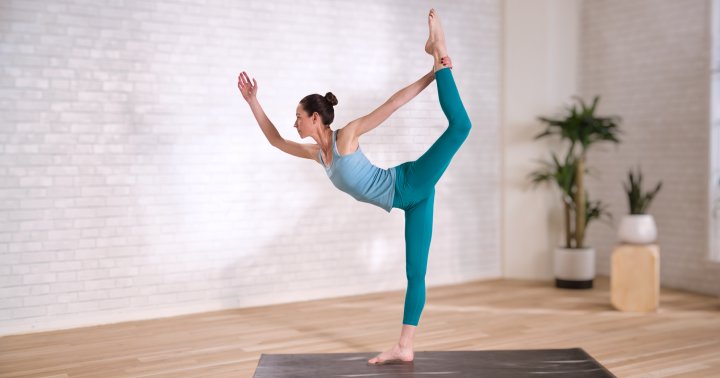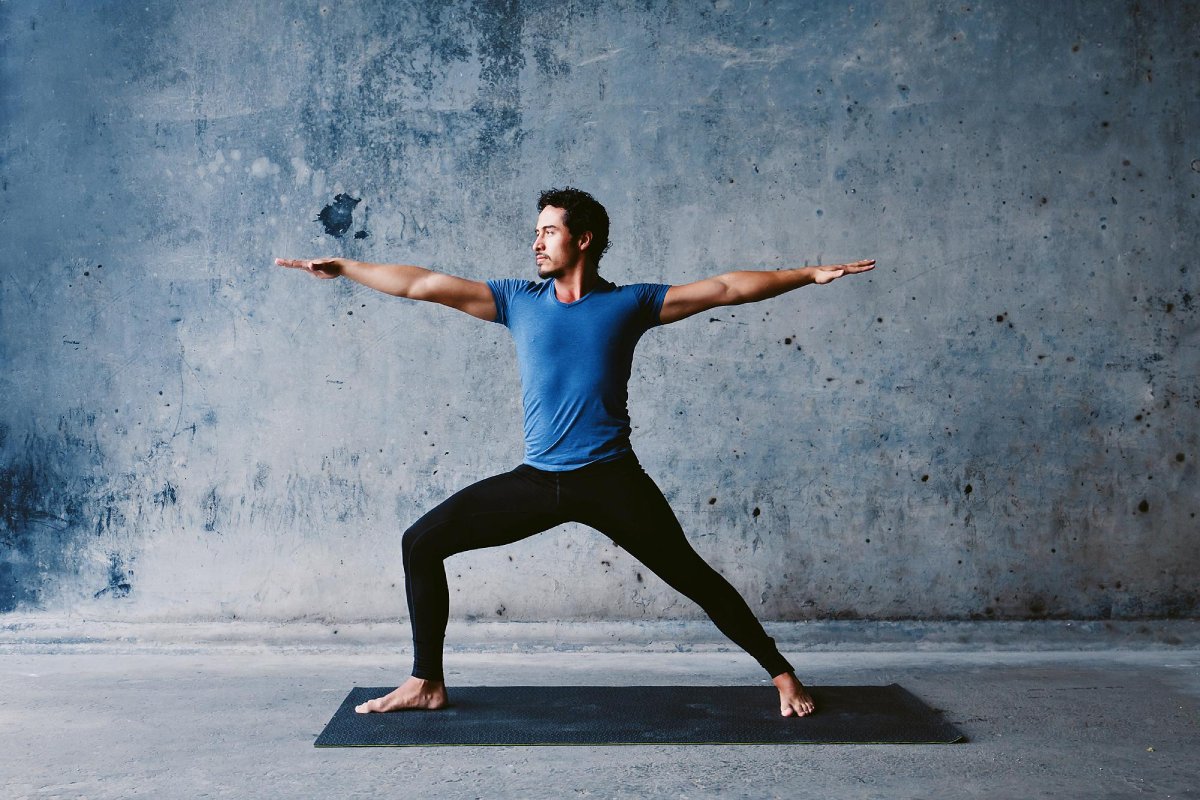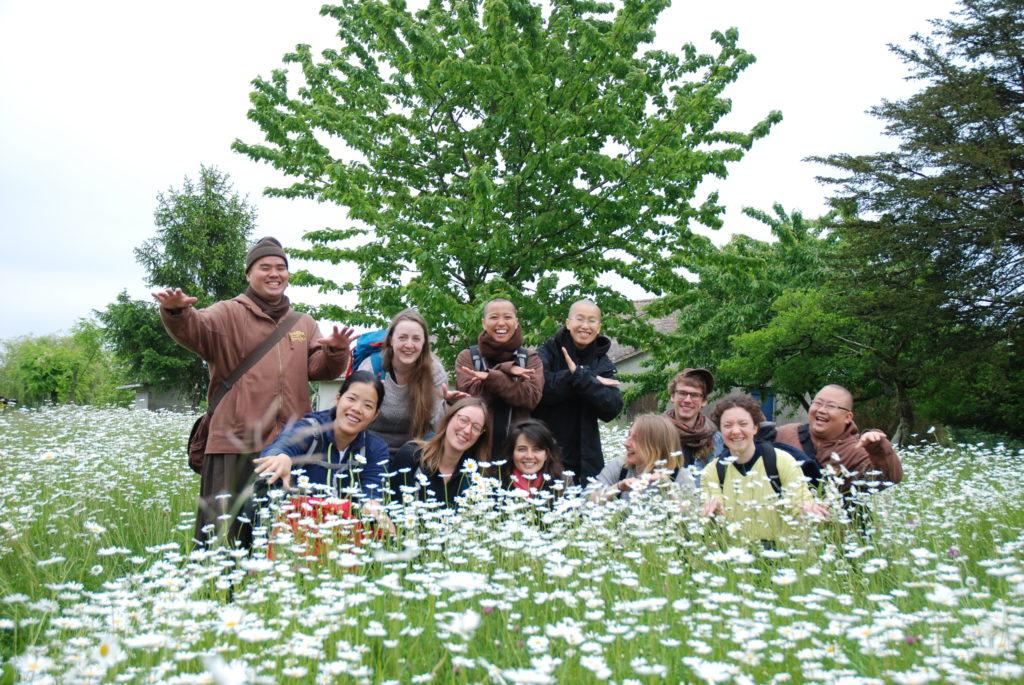Staff Pose (Dandasana), Step-By-Step: Your Guide to How and Why You Should Practice This Yoga Pose
The post Staff Pose (Dandasana), Step-By-Step: Your Guide to How and Why You Should Practice This Yoga Pose appeared first on The Yoga Nomads.
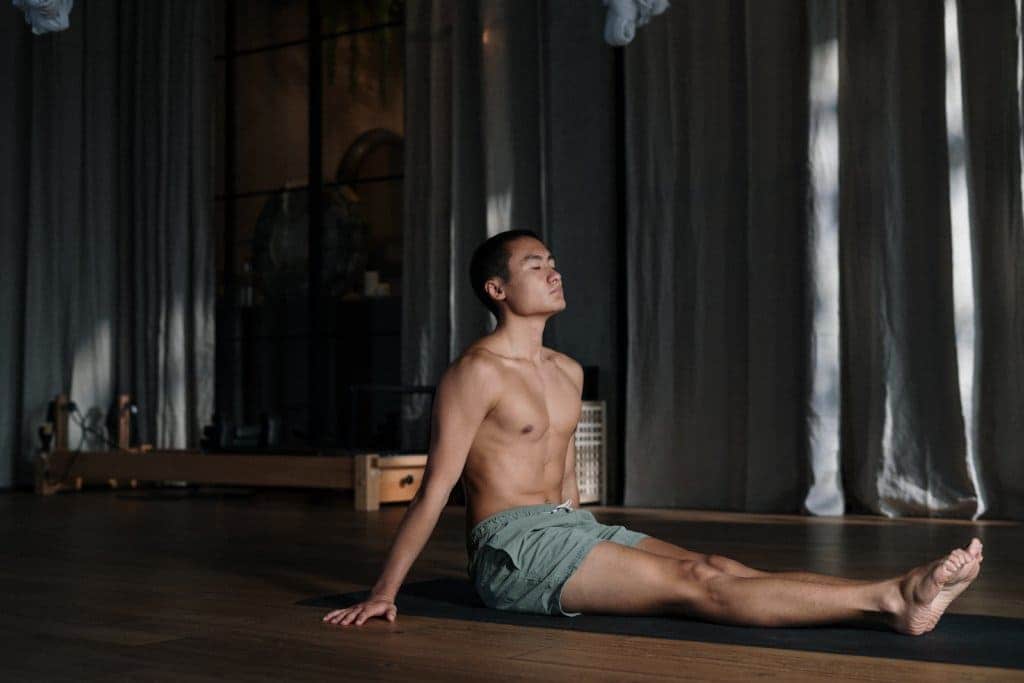
“Try yoga? But I can’t even touch my toes!” — a phrase virtually every yoga teacher has heard some variation of at least once.
According to the American College of Sports Medicine flexibility is often the most overlooked element of a well-rounded fitness routine. Practicing yoga is a highly effective way to improve flexibility; yet, many people mistakenly believe you need to already be substantially flexible in order to do yoga! But believe it or not, you can absolutely practice yoga without touching your toes!
Staff Pose (Dandasana) gives us an excellent example of this concept. In this article, we’ll break down this deceivingly simple yet challenging pose. You’ll soon discover why this pose is a foundational part of a yoga practice, from beginners to advanced yogis!
What Is Staff Pose (Dandasana)?
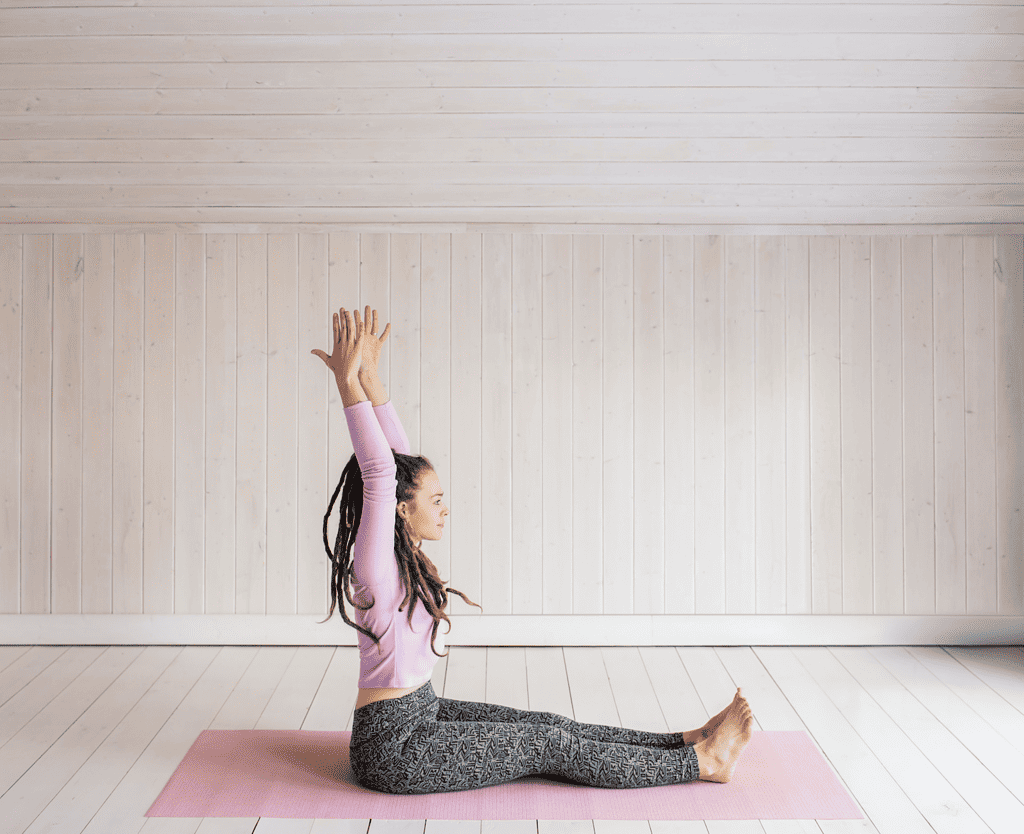
Staff Pose is a beginner-level seated yoga asana. The name comes from the Sanskrit Dandasana: danda, meaning “stick” or “staff,” and asana, which means “posture.” Although it is considered a basic pose, that does not mean that more advanced yoga students should skip Staff Pose.
Just as Mountain Pose (Tadasana) is a foundational pose for all other standing poses, you might think of Staff Pose as a seated version of Tadasana. Dandasana provides a solid foundation of overall posture alignment for many other seated yoga poses.
Typically, your yoga teacher will direct you into Staff Pose while transitioning from standing to seated poses. But, as you’ll see, the many benefits Staff Pose provides makes it worth practicing in its own right.
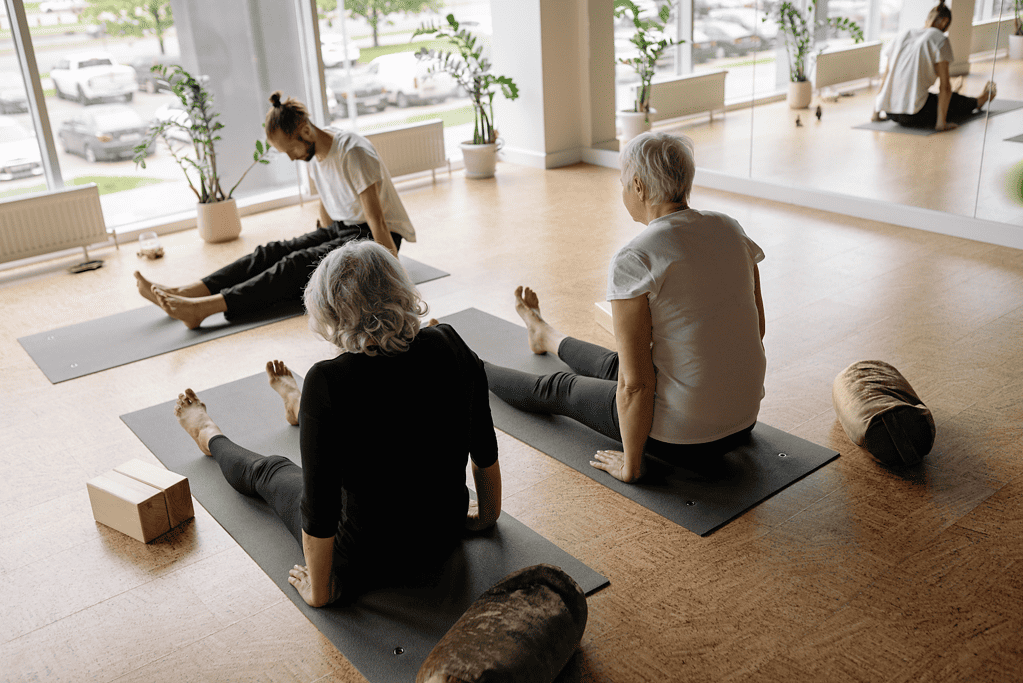
Benefits of Staff Pose (Dandasana)
Sitting on the floor with your legs extended in front of you seems like a simple action. But the intention with which you bring your body into Staff Pose makes all the difference. You become aware of your spine’s alignment while giving a gentle stretch to your legs. As you make a conscious effort to elongate your spine, you stimulate energy flow along the spinal column, inviting a sensation of self awakening.
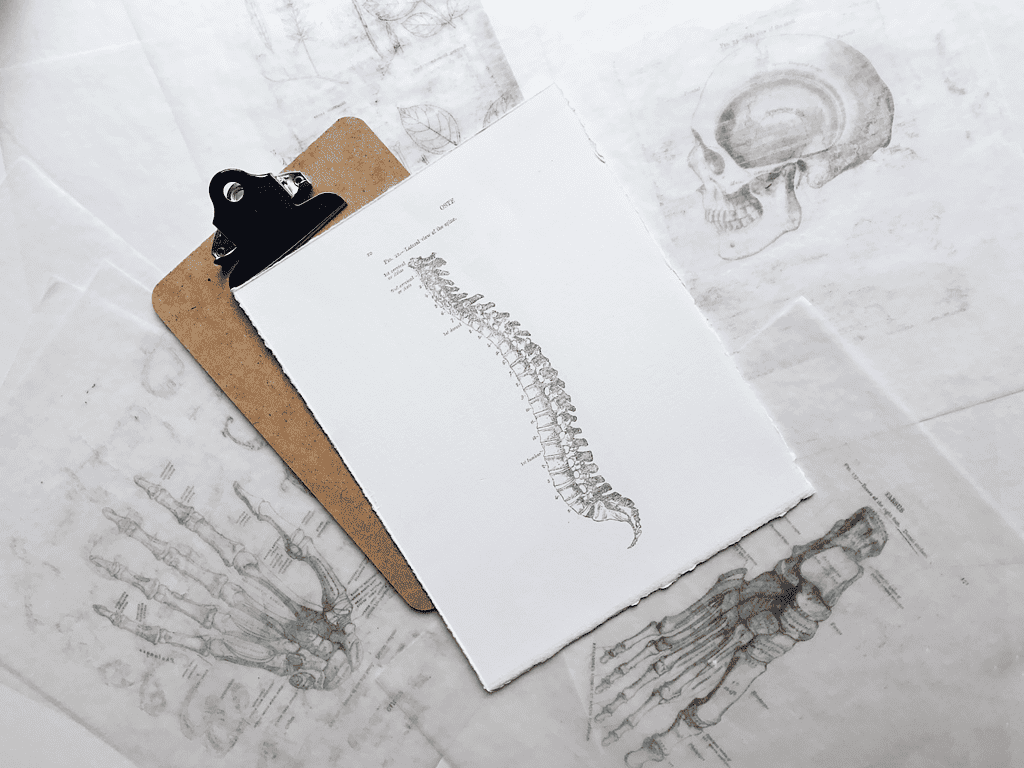
When practiced regularly, Staff Pose offers many benefits:
Increases spinal awareness Improves posture, lengthens the spine Strengthens back muscles and core Strengthens the thigh muscles Lengthens the hamstrings gently Sets up good posture and alignment for all seated poses Builds mindfulness and body awarenessThe Connection Between Hamstrings and Correct Posture
Practicing Staff Pose clearly demonstrates the connection of tight hamstrings and lower back pain: if your hamstrings are super tight, your low back will be rounded, instead of maintaining the natural lumbar curve when you try to sit up straight.
Modern life has become increasingly sedentary for most of us — nearly 1/3 of adults worldwide do not engage in sufficient physical activity. Sitting all day in front of a computer, slouching tensely in vehicles commuting to and from work, lounging on the couch bingeing the latest show all contribute to poor posture, aches, and pains. When muscles are underused, they become shorter, tighter, stiff, and weak; this explains why sometimes even a small movement can result in muscle strain.

Tight hamstrings in particular play a big role in back pain, and directly affects low back mobility. More specifically, short hamstring length is linked to smaller range of motion in pelvis and lumbar vertebrae.
Researchers found that stretching the lower body significantly affects the low back region due to interconnectedness of the leg muscles, gluteal muscle group, hip flexors, and lower back muscles. Stretching the hamstrings specifically resulted in a positive effect of sitting posture.

So, if you experience frequent back pain or feel you have poor posture when seated, try practicing Staff Pose (Dandasana) for some relief. It will help lengthen your spine while gently opening your hamstrings, which may very well be the source of your discomfort.
How To Do Staff Pose (Dandasana)
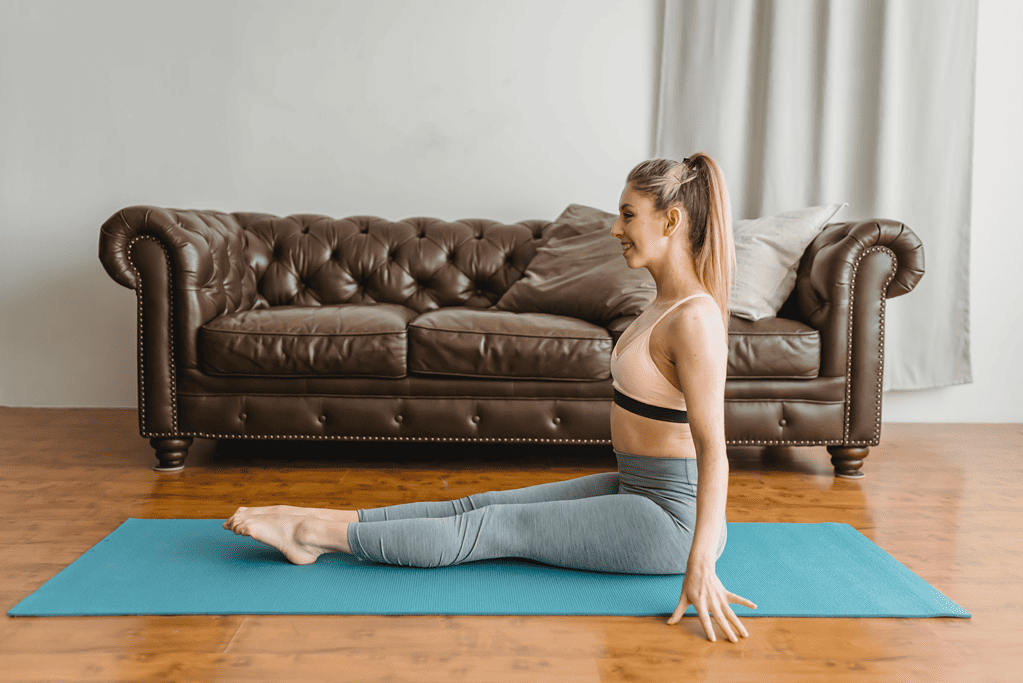
Staff Pose is an extremely adaptable pose you can practice at home, or next to your desk when taking a break from work. Spending just a couple minutes in this stretch can help you feel more focused, less tense, and can even boost your energy! Try it for yourself, noticing how your body feels before and after Staff Pose.
Begin seated on the floor with your legs straight out in front of you. You can keep your feet together, big toes touching; or, you may separate your feet slightly, about hip-width distance. Sit tall, with your torso perpendicular to your legs. Reach the crown of your head up towards the sky. Tilt your pelvis slightly forward, to ensure you are directly on your sit bones. Flex your feet, pulling your toes back towards you. Pull your kneecaps up to engage the muscles of your thighs. Feel length in the backs of your legs from your heels to the top of your femur bones. Bring your arms by your sides and place your palms flat on the floor, fingers pointing forward. Draw your lower belly in and up to engage your abdominal muscles. Lift your chest and draw your shoulder blades open and down, widening across your upper back. Press your palms into the floor and grow taller through the top of your head, neck long; think about creating space between your shoulders and ears. Keep your chin parallel to the floor so your neck remains aligned with your spine. Hold your Staff Pose for 5-10 breaths, then let your body rest.If you prefer to follow a visual demonstration with audio instructions, check out this short and sweet Staff Pose tutorial: https://www.youtube.com/watch?v=ud7zXNf_qlg
Contraindications of Staff Pose (Dandasana)
While Staff Pose is quite safe for most people, there are a few precautions to take in special cases.
For example, if you’ve had herniated discs, or another type of lower back injury, take care that you feel no pulling sensation in your lower back. Try keeping a slight bend in your knees to prevent this. It will also be helpful to try the modifications detailed below to ensure you are fully supported in Staff Pose.
If you have a wrist injury or carpal tunnel syndrome, it might cause discomfort to flex your wrists and press your palms into the floor. Instead, you can make fists with your hands and place your knuckles on the floor. Another option is to turn your hands the opposite direction; it might be more comfortable if your arms rotate outward with your fingers pointing behind you.
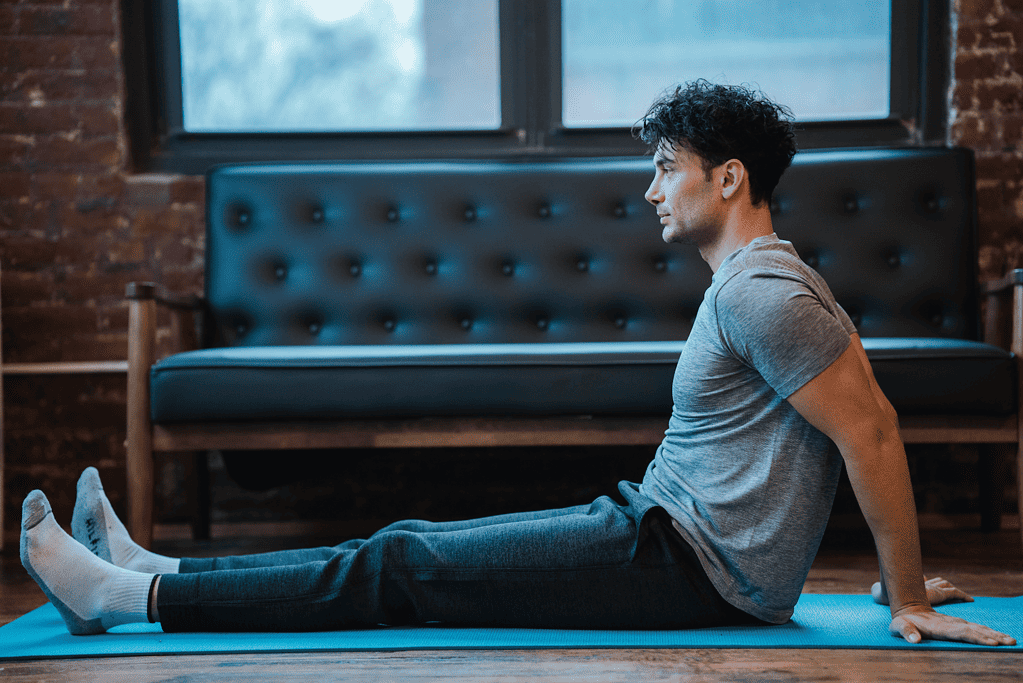
Staff Pose (Dandasana) Modifications
The key to practicing Staff Pose correctly is in the spinal column: your spine’s alignment should maintain its natural curves, rather than allowing the lower back to round. This might occur if your abdominal muscles are weak, or if your hamstrings are very tight. Try these modifications for Staff Pose, using props to assist you as you build up strength, flexibility, and spinal awareness.
Folded blanket: for tight hamstrings, try elevating your hips slightly. Place a folded blanket under your sitting bones Against a wall: Staff Pose requires core strength to keep your upper body straight. If you need a little extra support, try doing Dandasana with your back and shoulders against a wall. Yoga blocks: if you are unable to place your palms flat on the floor, due to having short arms or having your hips elevated on a blanket, you can place yoga blocks under your hands.
Variations of Staff Pose
Experience Staff Pose in a variety of ways, from a more relaxing version to a challenging arm balance!
Restorative Yin Variation
This restorative version of Staff Pose will allow you to really relax into the lower body stretch, allowing you to focus on your breath and your spine. This makes a great position for a seated meditation as well.
Sit on the floor on your yoga mat with your back and shoulders against a wall. You might also choose to place a blanket under your sit bones for extra cushion. Open your legs, with your feet a little wider than your hips. Place a rolled blanket or bolster under knees. Let your hands rest on top of your thighs. Lean your head back against the wall and close your eyes. Take your awareness to your spinal column as you let your breath flow freely and easily. Stay in your supported Staff Pose as long as is comfortable.Lifted or Floating Staff Pose (Utpluti Dandasana)
For advanced yogis, try this challenging variation of Dandasana known as Floating Staff Pose. It is also commonly known as an L-sit. This arm balance requires substantial strength in the core, upper body, and hip flexors. This is a fantastic way to prepare your body for other arm balancing yoga poses.
Begin in regular Staff Pose. If your arms are on the shorter side and you cannot press your palms firmly into the floor, place a yoga block under each hand. Sit as tall as you can with your spine long. Engage your abdominal muscles by pulling your navel in and up. Keep your chest open and draw your shoulders down away from your ears. Press the floor away with your hands and engage your hip flexors to float your legs up off the ground, maintaining the L-shape of your body. Alternatively, you can also start by keeping your heels driving into the ground with your feet flexed, until you can hold your legs hovering above the floor. Hold your Floating Staff Pose as long as you can (aim for 3 breaths to start), then gently lower yourself back down and rest.Preparatory Poses
Oftentimes you’ll encounter Staff Pose as you move from standing poses to seated. Both of these preparatory poses can be used in that transition. Additionally, these yoga poses will help open up the backs of your legs while bringing your attention to your spine — the main focus of Staff Pose.
Standing Forward Fold
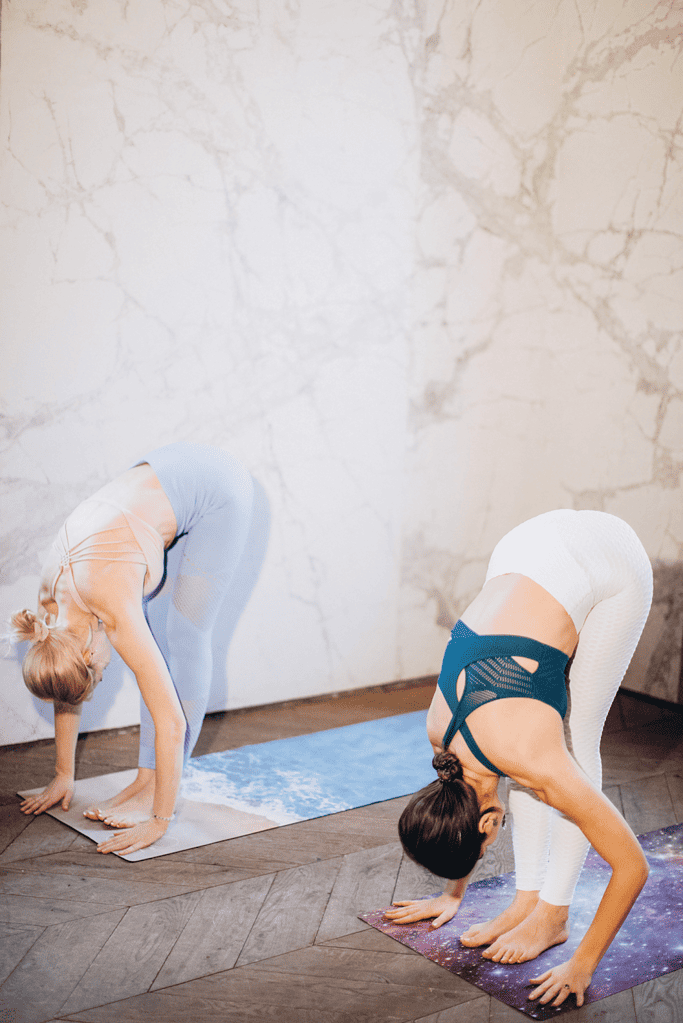 Stand tall with your feet at a hip width distance.
As you breathe in, reach your arms up over your head.
Breathe out and dive forward, bending at your waist.
Bring your fingertips to the ground (or place your hands on blocks). Drop your head and relax the back of your neck.
Keep a micro-bend in your knees to help release your lower back.
Hold your Forward Fold for a few breaths, then continue on to your next pose.
Stand tall with your feet at a hip width distance.
As you breathe in, reach your arms up over your head.
Breathe out and dive forward, bending at your waist.
Bring your fingertips to the ground (or place your hands on blocks). Drop your head and relax the back of your neck.
Keep a micro-bend in your knees to help release your lower back.
Hold your Forward Fold for a few breaths, then continue on to your next pose.
Downward Facing Dog
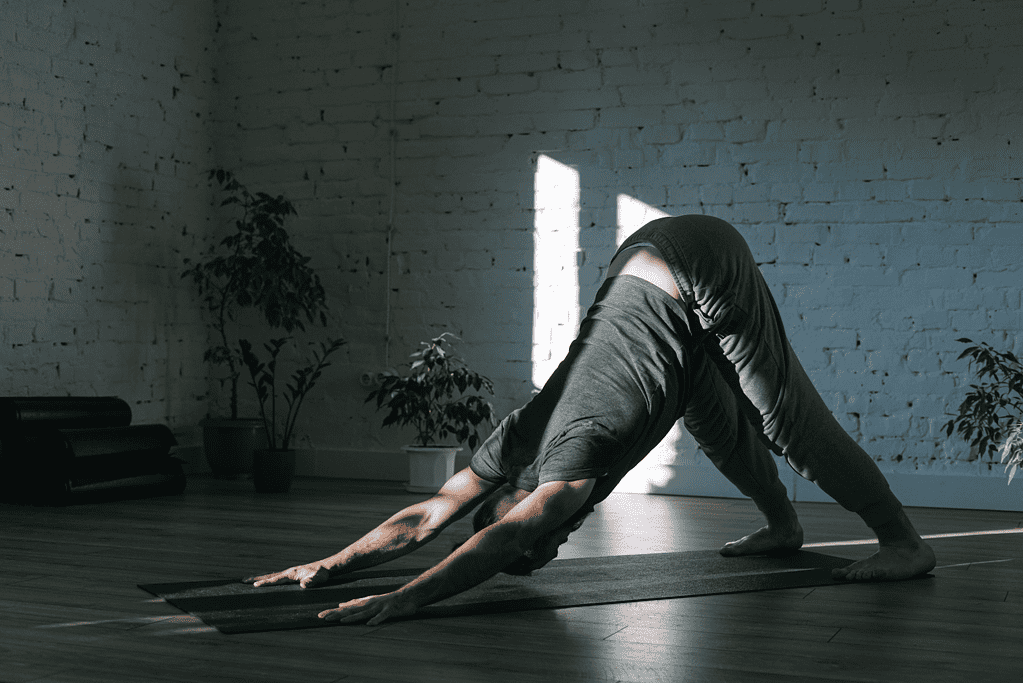 From Standing Forward Fold, plant your palms on the ground and step your feet back.
Keep your hips high, creating an upside-down V-shape with your body.
Tilt your pelvis slightly so your sit bones are pointing toward the sky.
Widen your shoulder blades across your upper back and press your chest toward your thighs.
Keep your knees slightly bent if you have tightness in your legs or low back.
Hold your Down Dog for 3-5 breaths, then lower your knees gently to the floor and rest.
From Standing Forward Fold, plant your palms on the ground and step your feet back.
Keep your hips high, creating an upside-down V-shape with your body.
Tilt your pelvis slightly so your sit bones are pointing toward the sky.
Widen your shoulder blades across your upper back and press your chest toward your thighs.
Keep your knees slightly bent if you have tightness in your legs or low back.
Hold your Down Dog for 3-5 breaths, then lower your knees gently to the floor and rest.
Follow Up Poses to Practice After Dandasana
Since Staff Pose is a foundational asana for all other seated poses, there are countless poses to practice next. Here are some of the most common poses that follow Dandasana. These are fantastic counterposes to Staff Pose as they stretch the legs, hips, and front of the body.
Seated Forward Fold
 Sit tall in Dandasana. With an inhale, reach your arms up.
As you exhale, hinge from your waist to fold forward.
Bring your hands to your ankles or grasp the soles of your feet, and drop your head.
Hold your forward fold for several breaths, then gentle return to an upright seated position.
Sit tall in Dandasana. With an inhale, reach your arms up.
As you exhale, hinge from your waist to fold forward.
Bring your hands to your ankles or grasp the soles of your feet, and drop your head.
Hold your forward fold for several breaths, then gentle return to an upright seated position.
Bound Angle Pose
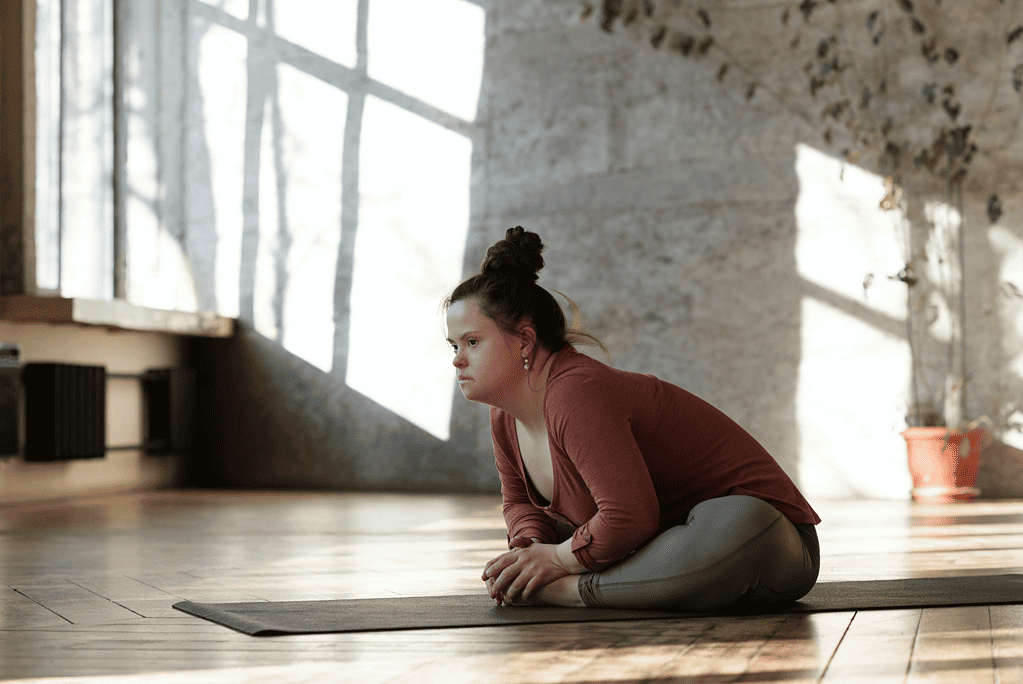 From Staff Pose, bend your legs and bring the bottoms of your feet together.
Press your heels together and let your knees fall open to the sides, opening your hips.
Stay lifted, grasping your ankles or feet, or take a forward fold.
After a few breaths, release and rest in an easy cross-legged position.
From Staff Pose, bend your legs and bring the bottoms of your feet together.
Press your heels together and let your knees fall open to the sides, opening your hips.
Stay lifted, grasping your ankles or feet, or take a forward fold.
After a few breaths, release and rest in an easy cross-legged position.
Reverse Plank
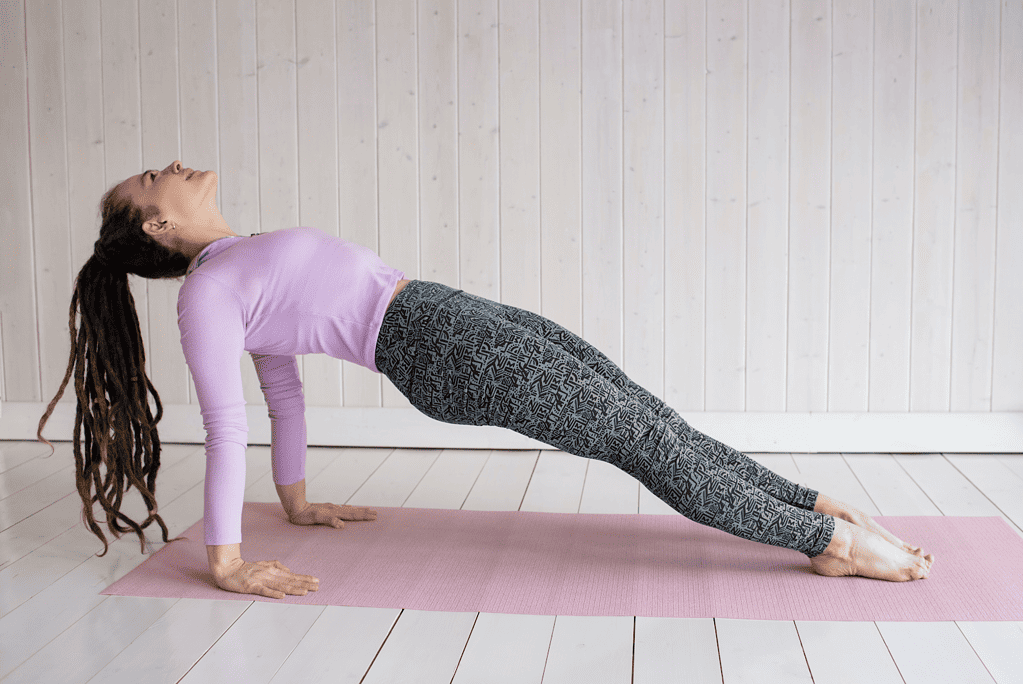 Begin in Dandasana. Move your hands a few inches behind your hips. Keep your palms on the ground with your fingers pointing forward.
Press your heels into the ground and lift your hips, engaging your glutes.
Extend your ankles, bringing your feet flat to the floor. Create one long line with your body, from the tops of your feet to the crown of your head.
Open across your chest and draw your shoulder blades together.
Keep squeezing your glutes and lifting from your back body.
Hold your Reverse Plank for several breaths, then lower your hips carefully back down to the floor, returning to Dandasana.
Begin in Dandasana. Move your hands a few inches behind your hips. Keep your palms on the ground with your fingers pointing forward.
Press your heels into the ground and lift your hips, engaging your glutes.
Extend your ankles, bringing your feet flat to the floor. Create one long line with your body, from the tops of your feet to the crown of your head.
Open across your chest and draw your shoulder blades together.
Keep squeezing your glutes and lifting from your back body.
Hold your Reverse Plank for several breaths, then lower your hips carefully back down to the floor, returning to Dandasana.
Common Questions About Staff Pose
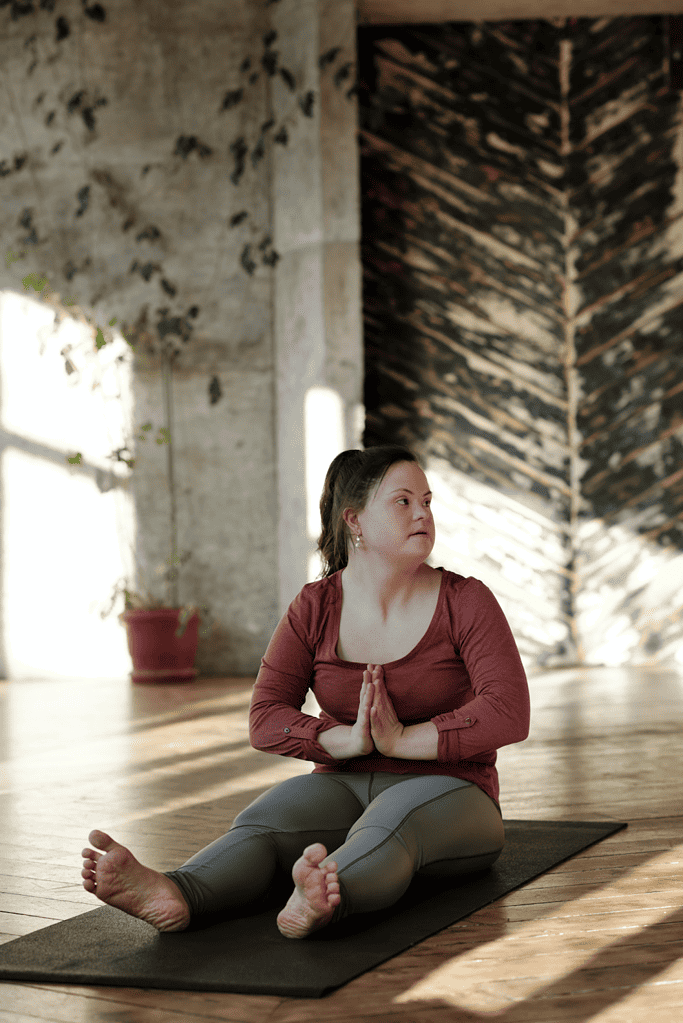
What makes Staff Pose feel difficult?
Tight hamstrings and weak back and core muscles will make Dandasana more challenging. Most people are used to sitting and slouching, whereas in Staff Pose the muscles along the spinal column are engaged and the spine erect. Similarly, you must engage the core muscles to keep your torso upright. Lastly, tight hamstrings (a common issue for many people who sit for long periods of time), can affect your ability to stretch your legs out in front of you without rounding your lower back.
Who should practice Staff Pose?
Virtually everyone can benefit from practicing this seated yoga pose, as it brings awareness to your posture and promotes mindfulness. People who have very tight hamstrings, and want to prevent low back pain can easily practice Staff Pose daily (no yoga mat or class necessary!). Similarly, people who participate in activities that can lead to hamstrings becoming tight (running and other sports) can help prevent injuries if they regularly practice Dandasana.
When should I practice Staff Pose?
Within your yoga practice, you can come into Dandasana when transitioning from standing to seated poses. However, as this pose is so adaptable, you can easily do this stretch before or after any physical activity, or after a long period of sitting.

 Fransebas
Fransebas 








